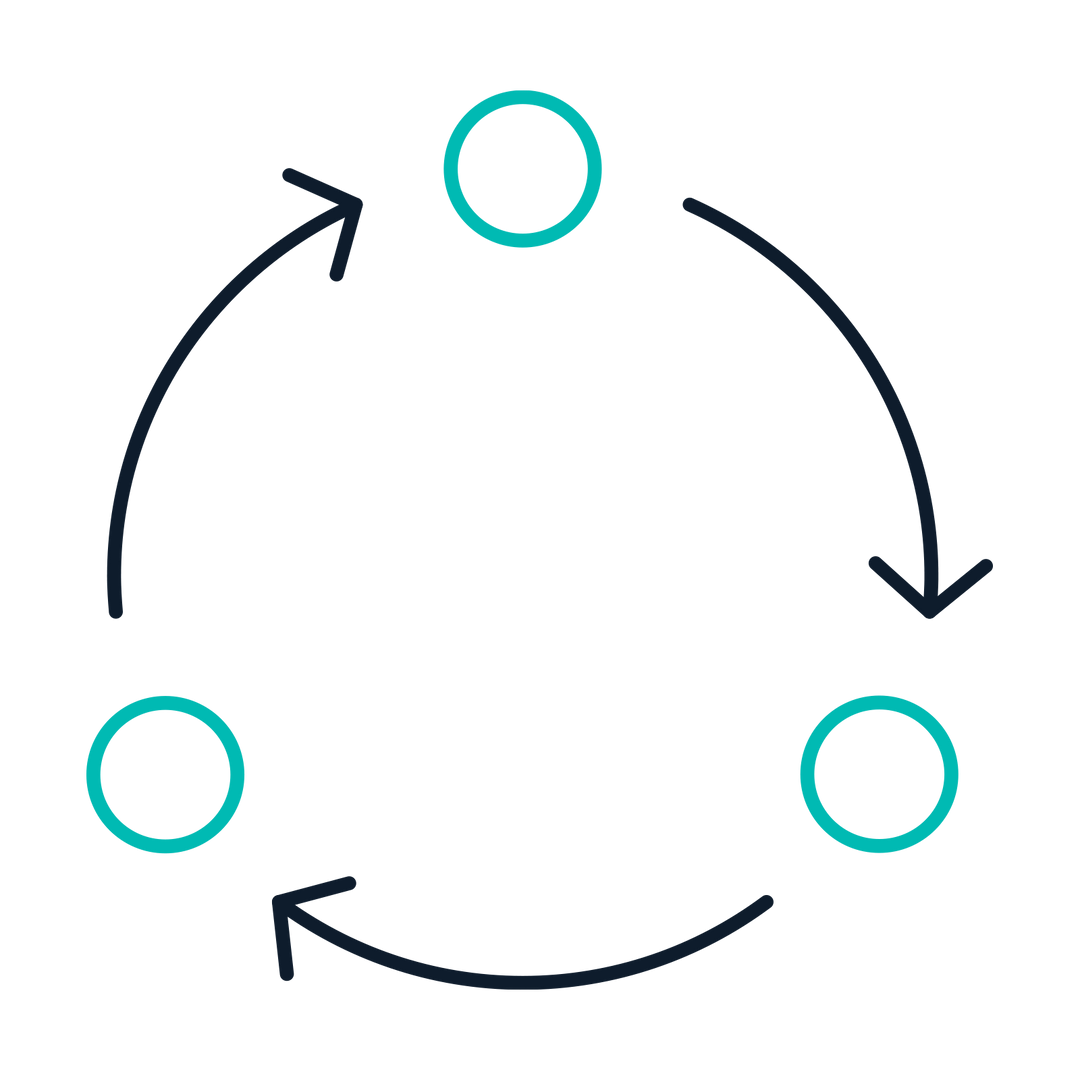Maintain differentiation potential of pluripotent stem cells in vitro
KACTUS has successfully developed a high-quality Laminin 521 product that can be applied to scientific research (research-grade) and preclinical development (preclinical-grade). It can effectively support the normal growth and passage of PSCs, maintain good stemness, and ensure the homogeneous growth of cells with genetic stability. Laminin 521 can be applied to the cultivation of stem cells and other primary cells and the development of related stem cell products.Research-Grade Preclinical-Grade
Laminin 521 Product Features

Various Cell Types
Applicable to a wide range of cells: iPSCs, hMSCs & most anchorage-dependent progenitor cell types

High Quality
Greater than 95% purity and low internal toxicity (<10EU/mg)

Feeder-Free Culture
Compatible with a variety of feeder-free stem cell culture media

Uniform Growth
Maintain homogeneous growth and karyotype stability of stem cells
Which Laminin 521 is right for me?
| Parameter | Research-Grade Laminin 521 #LMN-HM521 |
Preclinical-Grade Laminin 521 #LMN-HM522 |
|---|---|---|
| Concentration | 0.1mg/mL | 0.1mg/mL |
| Purity | ≥ 95% | ≥ 95% |
| Endotoxin | <1EU/mL | <1EU/mL |
| TSE/BSE Statement | --- | Animal-Origin Free |
Shop Laminin 521 | Ships Next Day

Research-Grade

Preclinical-Grade
Product Performance
KACTUS Laminin 521 was pre-coated with 0.5µg/cm² in a 6-well dish, seeding the thawed iPSC cells at a concentration of 1×10⁴/cm². After 5 days of culture, stem cell markers were detected via flow cytometry.

Figure 1. KACTUS Laminin 521 can effectively maintain the growth of human iPSCs as demonstrated by normal expression of stem cell markers.

Figure 2. Laminin 521 can effectively maintain the growth of human iPSCs.
Laminin 521 Applications
Stem Cell Expansion Culture
Laminin 521 can support the low-density growth and self-renewal of stem cells in a chemically defined, animal-free environment. It is suitable for the culture of hSC, iSC and cloned stem cells, such as hPSC [4], MSC, hematopoietic stem cells, etc.
Directed Differentiation of Stem Cells
Laminin 521 promotes the differentiation of hPSCs into different cell types such as hepatocytes, cardiomyocytes, retinal pigment epithelial (RPE) cells [5] and endothelial cells [6]. hESCs grown on Laminin 521 can exhibit molecular phenotypic characteristics of hepatocytes and undergo cell self-organization [7].
Organoid Culture
Indeterminate media replacing Matrigel is a major target for organoid culture, and full-length laminin (rather than laminin-derived peptides) has been shown to be a key component for the correct formation of organoids in gel models. Lucendo-Villarin and collaborators developed an economical automated platform for the generation of human hepatic spheroids from pluripotent stem cell-derived hepatic progenitors, endothelial cells, and hepatic stellate cells with the help of laminin 521, which can be used in disease modeling and drug screening research [8].
Growth Maintenance of Differentiated Primary Cells
Laminin 521 can support the growth and proliferation of differentiated primary cells, such as cardiomyocytes, retinal pigment epithelial (RPE) cells, nerve cells, endothelial cells, islet cells, etc. For example, the basement membrane damage of the isolated islets will cause islet function decline and cell death, but when cultured on a matrix containing Laminin 521, it can significantly promote the survival and function maintenance of islet cells [9], and has now been successfully applied in the original Generation islet cell culture system. Likewise, cardiac progenitor cells differentiated in vitro can proliferate on Laminin 521-containing matrices and transform into mature cardiomyocytes.
Drug Research
Laminin 521 is a new anti-GBM disease pulmonary hemorrhage autoantibody target. Studies have shown that in anti-glomerular basement membrane disease, circulating antibodies can recognize Laminin 521 in addition to type IV collagen, indicating that Laminin 521 is Another major autoantigen against GBM [10], autoantibodies against Laminin 521 may promote lung injury and lead to pulmonary hemorrhage by increasing the total amount of IgG bound to the alveolar basement membrane, which provides theoretical clues for the development of related drugs.
How do I use Laminin 521?
General recommended procedure:
1. Coat the cell culture flask/dish with Laminin 521 (a typical dosage is 0.5 μg/cm² but this can vary depending on the experiment).
2. Wash the cells and incubate with digestive enzymes or EDTA.
3. Separate into a single cell suspension, centrifuge, and resuspend in appropriate fresh medium.
4. Seed cells on culture flask/dish coated with Laminin 521.
For additional support:
Recombinant Laminin 521 FAQs
Laminin 521 is a full-length extracellular matrix (ECM) glycoprotein that supports cell adhesion, proliferation, and survival. It is widely used in stem cell and primary cell culture to promote stable growth and directed differentiation.
Both grades offer ≥95% purity and low endotoxin levels (<1 EU/mL).
– Preclinical-grade is produced under enhanced documentation standards and is xeno-free, making it suitable for translational and cell therapy workflows.
– Research-grade is suitable for routine academic or early-stage research.
Laminin 521 supports a broad range of anchorage-dependent cells, including human pluripotent stem cells (hPSCs), mesenchymal stem cells (MSCs), hematopoietic stem cells, cardiomyocytes, RPE cells, neuronal cells, and islet cells.
A typical coating concentration is 0.5 µg/cm². Dilute the Laminin 521 in a suitable buffer, apply evenly to the surface, and incubate before cell seeding. Refer to your specific protocol for adjustments.
Yes. Laminin 521 is compatible with chemically defined, feeder-free culture systems and helps maintain the self-renewal and genomic stability of stem cells during passaging.
Yes. Full-length Laminin 521 provides both structural scaffolding and biochemical signaling for 3D cultures, including hepatic spheroids, retinal organoids, and other tissue-specific models.
Laminin 521 promotes lineage-specific differentiation of hPSCs into hepatocytes, cardiomyocytes, endothelial cells, and retinal cells. It provides both structural and biochemical cues.
By mimicking native basement membrane conditions, Laminin 521 improves adhesion, survival, and functionality of differentiated primary cells such as cardiomyocytes and islet cells.
Each batch is tested for purity, endotoxin level, and bioactivity. The preclinical-grade material includes documentation confirming absence of animal-derived components.
Yes. The preclinical-grade Laminin 521 is suitable for workflows requiring defined, xeno-free materials. It is designed for use in early-stage cell therapy and regenerative medicine research.





